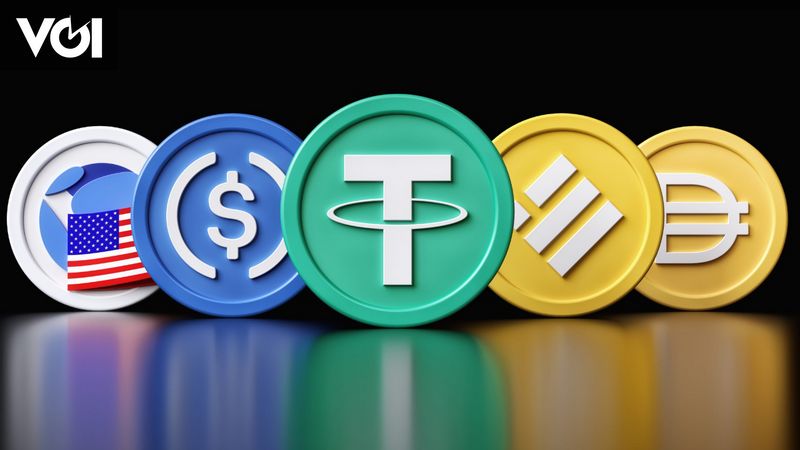Stablecoins are digital tokens whose value is pegged on other assets, such as commodities or fiat currencies, to stabilize their prices. By maintaining a ratio of 1:1 to certain fiat, assets, or commodities, most stablecoins serve as bridges between real-world assets and digital currencies by representing them as tokens on the blockchain.
As it tends to be pegged on relatively stable assets, stablecoins have become the most popular way for crypto users to transfer value without facing high price volatility. In addition, stablecoins are also a store for crypto users, allowing them to keep their capital on the grid even though they are not active in the market.
By buying stablecoins supported by fiat or commodity currencies, users sometimes also have the option to exchange them for real assets if they want to do so. However, it’s important to remember that not all stablecoins are fully supported by real-world assets, as some use on-chain asset combinations and smart contract algorithms to maintain their benchmarks.
Examples of Popular Stablecoins
The following is an example of stablecoins that are widely traded on crypto exchanges, both foreign and domestic exchangers.
USDT is a stablecoin managed by Tether. Tether currently holds the appropriate amount of reserves and issues an equivalent amount of stablecoins in the network. As a fiat-supported stablecoin pioneer, Tether has become one of the most popular ways to publish stablecoins.
Tether Limited, the company behind the stablecoin Tether (USDT), states that it has reserves equivalent to the amount of USDT in circulation. This means that every USDT published is supported by a US dollar in the company’s reserves. With this mechanism, Tether can maintain USDT value stability and trust users that they can exchange their USDT for US dollars at any time.
USDC is a stablecoin issued by Circle, a financial technology company that works closely with Coinbase in managing USDC. Each USDC is backed by a single US dollar in reserves consisting of cash and short-term bonds. USDC is known for its transparency, with reports of backups being audited and published regularly.
DAI is a decentralized stablecoin managed by MakerDAO, a decentralized autonomous organization on the Ethereum blockchain. DAI is pegged on the US dollar and supported by excess guarantees from crypto assets such as ETH and BTC. The liquidation mechanism is used to maintain stability of the DAI value, so it remains worth one US dollar.
PYUSD is a stablecoin published by PayPal, one of the largest payment companies in the world. PYUSD is designed to facilitate digital transactions and trade in the PayPal ecosystem. Each PYUSD is backed by a US dollar reserve, which allows users to exchange it for US dollars at any time. This step marks PayPal’s big step in adopting blockchain technology and strengthening its position in the digital finance industry.
Tag:
teknologi
aset kripto
stablecoin
This news is republished from another source. You can check the original article here







